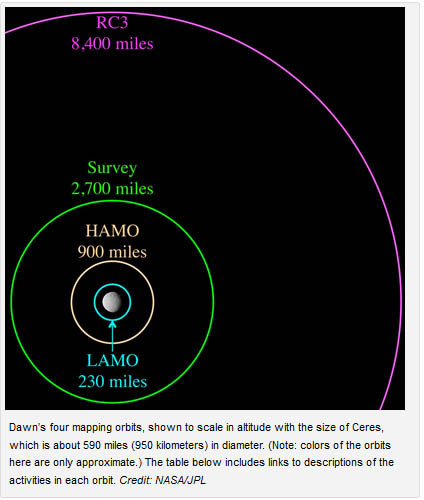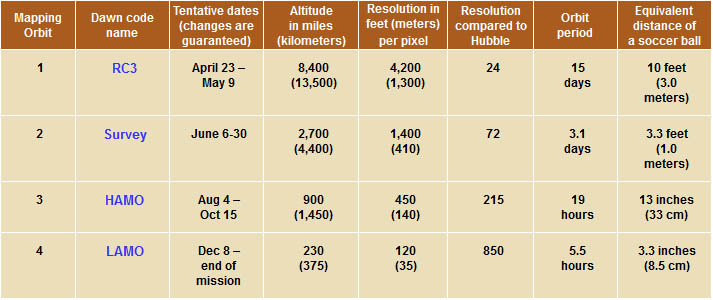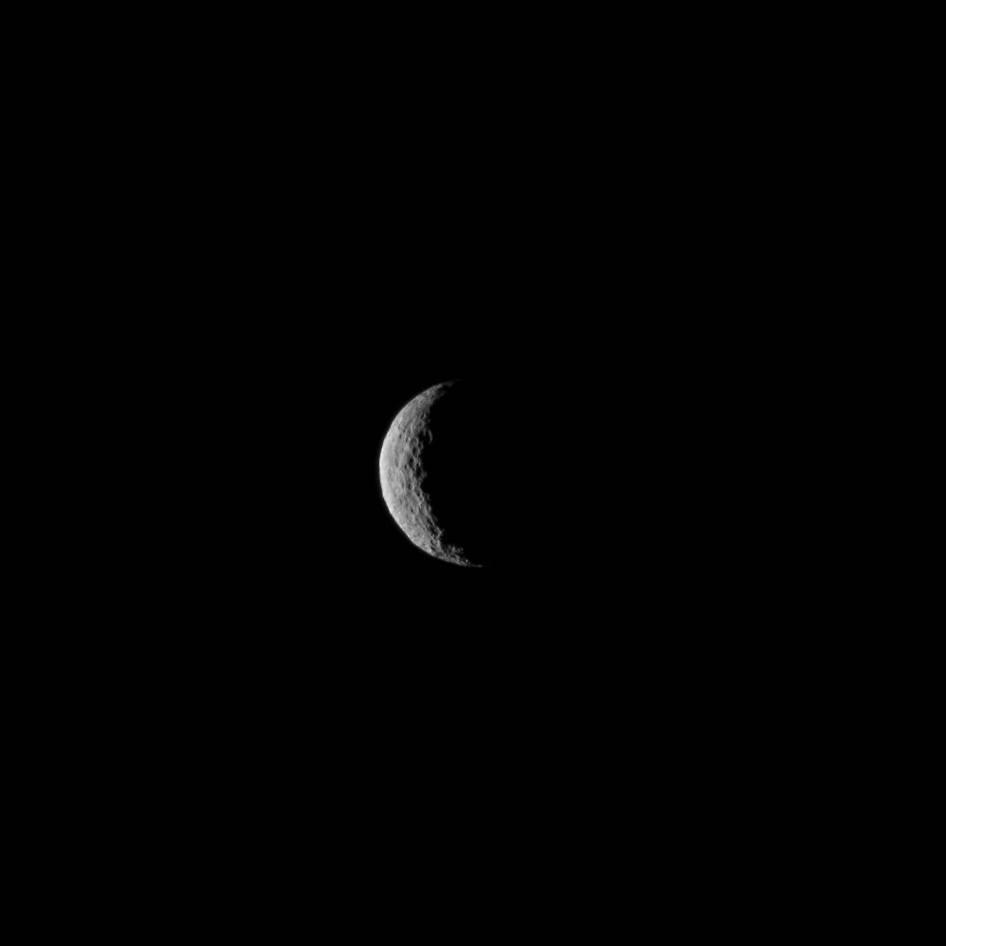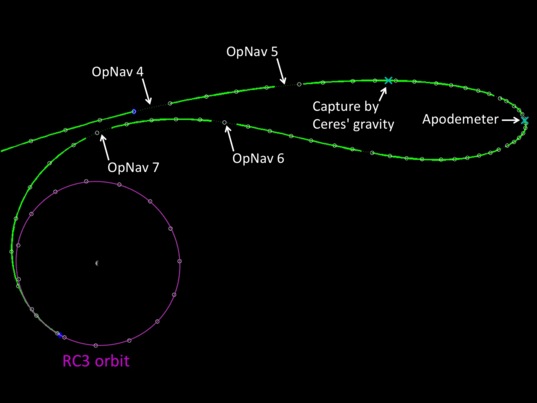It looks like you're using an Ad Blocker.
Please white-list or disable AboveTopSecret.com in your ad-blocking tool.
Thank you.
Some features of ATS will be disabled while you continue to use an ad-blocker.
share:
originally posted by: bluemooone2
a reply to: All Seeing Eye
In a nut shell, we should ask NASA and If they give you the run around with 400 pages of facts (but still no answer to the question of where all the pictures are) then assume that they refuse to answer the question and the reason is as it always is with them.
In short they could be hiding something important behind a wall of scientific mumbo-jumbo that is of course right on but misleading at the same time. There IS a reason they are often referred to here as Never A Straight Answer. That`s just my two billion cents here so feel free to disagree.
More people would tend to agree with a statement accompanied with specific checkable examples. In my experience, 'Never A Straight Answer' is a mantra used by mindless morons who realize they are incapable of understanding 'tech stuff' but still want to pose as intellectually and ethically superior to a team of people performing activities they instinctively realize they could never even attempt. Just a personal view, fuelled by pique. [grin]
originally posted by: JimOberg
In my experience, 'Never A Straight Answer' is a mantra used by mindless morons who realize they are incapable of understanding 'tech stuff' but still want to pose as intellectually and ethically superior...
Trust me, when these first images are released today or tomorrow, and they will only be of a thin crescent Ceres (the first images will only show an 18% lit face), someone on ATS will blame NASA for what they see as being underwhelming images that show them nothing (in their opinion).
Someone is going to say something like "I'm disappointed that after all this build-up talking about the first images, we can hardly see any of Ceres"...and then go on to blame NASA for their disappointment, as if NASA should be able to magically have more of Ceres be visibly lit from Dawn's current location.
originally posted by: JimOberg
originally posted by: bluemooone2
a reply to: All Seeing Eye
In a nut shell, we should ask NASA and If they give you the run around with 400 pages of facts (but still no answer to the question of where all the pictures are) then assume that they refuse to answer the question and the reason is as it always is with them.
In short they could be hiding something important behind a wall of scientific mumbo-jumbo that is of course right on but misleading at the same time. There IS a reason they are often referred to here as Never A Straight Answer. That`s just my two billion cents here so feel free to disagree.
More people would tend to agree with a statement accompanied with specific checkable examples. In my experience, 'Never A Straight Answer' is a mantra used by mindless morons who realize they are incapable of understanding 'tech stuff' but still want to pose as intellectually and ethically superior to a team of people performing activities they instinctively realize they could never even attempt. Just a personal view, fuelled by pique. [grin]
One of my teachers would answer that, this way.
If you can't explain it simply, you don't understand it well enough.
Albert Einstein
Read more at www.brainyquote.com...
To add to my post above, it should also be noted that the first orbit Dawn will be in for the next month won't even yield them the highest resolution
images. This first orbital altitude is relatively far from Ceres (13,500 km, or 8400 miles) and the best resolution images will be only 1300 meters
per pixel (4200 feet per pixel).
So hopefully people are not expecting super-duper hi-res images from Dawn right now. Dawn is not yet in its lowest orbit, and it won't be for several months.
Dawn will eventually dip into progressively lower orbits, but it won't be until the end of this year (in December) that Dawn will be at its lowest orbit of 375 km (230 miles) and will be taking its highest resolution images, which will be 35 meters per pixel, or 120 feet per pixel.

 Source:
Source:
Dawn Journal -- March 31 2015
So hopefully people are not expecting super-duper hi-res images from Dawn right now. Dawn is not yet in its lowest orbit, and it won't be for several months.
Dawn will eventually dip into progressively lower orbits, but it won't be until the end of this year (in December) that Dawn will be at its lowest orbit of 375 km (230 miles) and will be taking its highest resolution images, which will be 35 meters per pixel, or 120 feet per pixel.


Dawn Journal -- March 31 2015
edit on 4/13/2015 by Soylent Green Is People because: (no reason given)
edit on 4/13/2015 by Soylent Green Is People because:
(no reason given)
I find the following to be quite concerning.
14:30 13 April 2015 by Jacob Aron
Am I mistaken as to who NASA works for? And who should be Briefed first??
14:30 13 April 2015 by Jacob Aron
www.newscientist.com...
NASA's Dawn spacecraft is currently in orbit around the dwarf planet, which sits in the asteroid belt between Mars and Jupiter. Mission scientists presented the latest results from the spacecraft at the European Geosciences Union General Assembly in Vienna, Austria, today.
Am I mistaken as to who NASA works for? And who should be Briefed first??
a reply to: All Seeing Eye
Dawn is not just a NASA probe. It was partnered with European partners from the Netherlands, Italy and Germany.
Dawn is not just a NASA probe. It was partnered with European partners from the Netherlands, Italy and Germany.
Here's some new data suggesting subtle differences in different lights.... more imaging data soon to come.
www.nature.com...
www.nature.com...
originally posted by: wildespace
originally posted by: GaryN
originally posted by: DJW001
a reply to: GaryN
Likely not reflected light at all, but an emission line of hydrogen
At what wavelength? 486.1 nanometers? 656.2? Surely you must have some idea or you would not be in a position to say how likely it was.
No, I don't really know how that camera works, any info would be appreciated. Seems it uses an Active Pixel Sensor, which I have looked up, but how that is used in this instrument, I am not aware. I think it means that what used to need complex optics is now done in software, things like wave-front tilt correction, but for the most part, I am in the dark. As is the instrument at Ceres, but it's eyesight is likely MUCH better than mine.
Weren't those images taken by Dawn's Framing Camera? Here are its specs: indico.cern.ch...
Note that it uses a commercial CCD, and that they were concerned with bright sunlight causing strong contrast between the lit and shadowed areas, and also that the camera were able to photograph some very faint stars with a long exposure.
No, those were Navcam images, as are most of the Rosetta images of 67P so far. The active pixel sensors are now being used in some commercial cameras such as the Sony A7S, though those are APS-C, for colour. The ISO rating on the A7S goes to 409,000, so no wonder it can see so well in the dark.
Edit: I retract that last post, seems it was the framing camera, you were correct.
edit on 13-4-2015 by GaryN because: (no reason
given)
Its all great science and all but I think that I still want to land a TARDIS on the darn thing and find out whats really there. It is amazing and I
really want to know. Jumps into the white light and hopes for the best.
edit on 13-4-2015 by bluemooone2 because: (no reason given)
originally posted by: All Seeing Eye
New color photo out for Ceres
dawn.jpl.nasa.gov...
FYI and to clarify, that's not a actually a new image, but a color-processed version of the existing images from February.
On this imaging opportunity (April 10) and the next (April 14), Dawn will only be able to see a crescent Ceres -- not the entire lit surface. The April 10 images will be of an 18% lit crescent, and the April 14 images will be of a 25% lit crescent.
edit on 4/13/2015 by Soylent Green Is People because: (no reason given)
originally posted by: All Seeing Eye
a reply to: eriktheawful
Thank you for that. Still, there is a "Pecking order"?
Actually yes.
Space agencies and scientific groups normally share information and observations with each other first before it's released to the general public.
It's normal SOP as many scientist and groups of scientist may be working on projects and/or papers who's data and observations depend on it. It's not trying to keep something secret, it's just normal courtesy to those groups.
Just like a news station may not reveal the names of someone who has been killed until the family has been notified. (best example I could think of off the top of my head).
a reply to: eriktheawful
This is actually true and they seem to have done a very good job on it with mission.(not being sarcastic for once here) It was well done all around.
This is actually true and they seem to have done a very good job on it with mission.(not being sarcastic for once here) It was well done all around.
originally posted by: eriktheawful
originally posted by: All Seeing Eye
a reply to: eriktheawful
Thank you for that. Still, there is a "Pecking order"?
Actually yes.
Space agencies and scientific groups normally share information and observations with each other first before it's released to the general public.
It's normal SOP as many scientist and groups of scientist may be working on projects and/or papers who's data and observations depend on it. It's not trying to keep something secret, it's just normal courtesy to those groups.
Just like a news station may not reveal the names of someone who has been killed until the family has been notified. (best example I could think of off the top of my head).
Thank you for your thoughtful, and apparently honest answer.
Now for the darker side. After awhile, it can be a "Good Ol Boys" club, and if your not in it, tough.
Institutions, by design or by some psychological process, tend to claim a "Ownership" over the types of information they deal with. Generally speaking.
Yes, I am a Iconoclast because I saw the good old boys clubs, and how it works, and what the effect that brings. Judicial, Scientific, Educational, and even Spiritual, are not by design to further humanity, but to control it. That is where I come from, if anyone is interested.
"Oh, so you are mad at the system"? Yes, I believe the "System" does not belong to the people, but should.
Now my concerns about missing information. Sometimes, it is never released, and if it is, its because someone made a mistake. And like Soylent pointed out, it is already dated.
Someone, no names mentioned, questioned my credentials concerning the information received. Let me put it this way, there are no exams, no tests, no shingles to hang from ones door post, to be a member of this message board. And this is a very, very good idea. Because in this format, John Q Public can critique information without the color of any particular institution, or be swayed unduly by prevailing "Theories" that are taught as fact.. We teach, we learn, we share, equally. So when you come in here, take off your sense of superiority and ownership. We all pass on with the same rank.
Sorry to those who might be offended by the rant, its just the way it is.
originally posted by: Soylent Green Is People
originally posted by: JimOberg
In my experience, 'Never A Straight Answer' is a mantra used by mindless morons who realize they are incapable of understanding 'tech stuff' but still want to pose as intellectually and ethically superior...
Trust me, when these first images are released today or tomorrow, and they will only be of a thin crescent Ceres (the first images will only show an 18% lit face), someone on ATS will blame NASA for what they see as being underwhelming images that show them nothing (in their opinion).
Someone is going to say something like "I'm disappointed that after all this build-up talking about the first images, we can hardly see any of Ceres"...and then go on to blame NASA for their disappointment, as if NASA should be able to magically have more of Ceres be visibly lit from Dawn's current location.
They have already posted a picture of the slim crescent in early March, I don't think it will be all that much different for anything new right now,
"This image of Ceres was taken by the Dawn spacecraft on March 1, just a few days before the mission achieved orbit around the previously unexplored world. The image shows Ceres as a crescent, mostly in shadow because the spacecraft's trajectory put it on a side of Ceres that faces away from the sun until mid-April. When Dawn emerges from Ceres' dark side, it will deliver ever-sharper images as it spirals to lower orbits around the planet."
So yes, it is still a wait and see.

www.nasa.gov...
originally posted by: smurfy
They have already posted a picture of the slim crescent in early March, I don't think it will be all that much different for anything new right now...
For the April 10 images, Dawn will be slightly closer to Ceres than it was when that early March image of the crescent Ceres was taken, but not much closer. That March image was taken during "OpNav 5" (see graphic below). The image were are awaiting from April 10 would be "OpNav6". The images that will be taken on April 14 (tomorrow) will be "OpNav 7".

Dawn Journal -- March 31 2015
edit on 4/13/2015 by Soylent Green Is People because: (no reason given)
a reply to: All Seeing Eye
While the "good ol' boy" system is something that still exists (I've seen it), keep in mind a few things:
NASA and JPL doesn't control everything. Yes, they may have a space craft that they control and manage and receive all the data on, but they do not control everything that is out there.
They do not control anything the ESA does. Nor Russia, nor China, and not India (very impressive how they got to Mars on a shoe string budget. Pics are lousy, but the feat itself was impressive as hell!).
Nor does NASA/JPL control everything that they are involved in. For example: the LROC.
NASA doesn't control the images, nor puts out the images that the LROC takes of the moon.
The Arizona State University is who does that. And they put stuff out so fast, that in a interview a year or 2 ago, they actually said if their is a crashed alien space ship on the moon, more than likely it will be spotted by one of us who pour over the images because their own team is just a handful of people and can't spend the time like we can to pour over the images.
I know people love to bash NASA/JPL here. They get their paycheck from the Gov. so it's only natural that they'd be bashed time and time again on a conspiracy site.
However....they really don't control everything.
While the "good ol' boy" system is something that still exists (I've seen it), keep in mind a few things:
NASA and JPL doesn't control everything. Yes, they may have a space craft that they control and manage and receive all the data on, but they do not control everything that is out there.
They do not control anything the ESA does. Nor Russia, nor China, and not India (very impressive how they got to Mars on a shoe string budget. Pics are lousy, but the feat itself was impressive as hell!).
Nor does NASA/JPL control everything that they are involved in. For example: the LROC.
NASA doesn't control the images, nor puts out the images that the LROC takes of the moon.
The Arizona State University is who does that. And they put stuff out so fast, that in a interview a year or 2 ago, they actually said if their is a crashed alien space ship on the moon, more than likely it will be spotted by one of us who pour over the images because their own team is just a handful of people and can't spend the time like we can to pour over the images.
I know people love to bash NASA/JPL here. They get their paycheck from the Gov. so it's only natural that they'd be bashed time and time again on a conspiracy site.
However....they really don't control everything.
a reply to: eriktheawfulThank you, very informative. One of the things I love about ATS.
That all being said, Its frightening that "The good old boys" are trying to privatize as much as possible. Its one thing if a company builds its own spaceship and travels somewhere, takes pictures, and comes home. We would have no right to demand to see them. And I can now see when NASA "Teams" up with other entities that there are certain restrictions, legalities and protocol.
Some of the theories I have seen concerning Ceres really make my head spin when I read the the observations used to base the theory in.
Ceres is 415 million miles away, and they know the core is rock? We still haven't resolved what is at our planets core, and its only 3800 miles down, but they know Ceres is made of Rock, water, and ice. Really? Are they really teaching our kids this stuff at school? I pray they also teach the kids, its all only theory, and subject to change from time to time. Privately (owned) schools can probably drop the word theory all together, I suppose.
I'm not against theories, they are awesome intellectual tools, but they are extremely similar to assumptions. Especially when they base the entire theory on a observation that a asteroid wobbled a bit when it went by.
I guess what I'm saying is when the good old boys buy into something, its defiantly for a reason, and usually the reason is not in anyone best interest, except for the good old boys.
Then why in earth would anyone want to conceal information concerning Ceres?
That all being said, Its frightening that "The good old boys" are trying to privatize as much as possible. Its one thing if a company builds its own spaceship and travels somewhere, takes pictures, and comes home. We would have no right to demand to see them. And I can now see when NASA "Teams" up with other entities that there are certain restrictions, legalities and protocol.
Some of the theories I have seen concerning Ceres really make my head spin when I read the the observations used to base the theory in.
en.wikipedia.org...
Ceres appears to be differentiated into a rocky core and icy mantle, and may harbor a remnant internal ocean of liquid water under the layer of ice.[20][21] The surface is probably a mixture of water ice and various hydrated minerals such as carbonates and clay. In January 2014, emissions of water vapor were detected from several regions of Ceres.[22] This was somewhat unexpected, because large bodies in the asteroid belt do not typically emit vapor, a hallmark of comets.
The robotic NASA spacecraft Dawn entered orbit around Ceres on 6 March 2015.[23][24][25] Pictures with previously unattained resolution were taken during imaging sessions starting in January 2015 as Dawn approached Ceres, showing a cratered surface. A bright spot seen in earlier Hubble images was resolved as two distinct high-albedo features inside a crater in a 19 February 2015 image, leading to speculation about a possible cryovolcanic origin.[26] On 3 March 2015, a NASA spokesperson said the spots are consistent with highly reflective materials containing ice or salts, but that cryovolcanism is unlikely.[27]
Ceres is 415 million miles away, and they know the core is rock? We still haven't resolved what is at our planets core, and its only 3800 miles down, but they know Ceres is made of Rock, water, and ice. Really? Are they really teaching our kids this stuff at school? I pray they also teach the kids, its all only theory, and subject to change from time to time. Privately (owned) schools can probably drop the word theory all together, I suppose.
I'm not against theories, they are awesome intellectual tools, but they are extremely similar to assumptions. Especially when they base the entire theory on a observation that a asteroid wobbled a bit when it went by.
en.wikipedia.org...
The mass of Ceres has been determined by analysis of the influence it exerts on smaller asteroids.
I guess what I'm saying is when the good old boys buy into something, its defiantly for a reason, and usually the reason is not in anyone best interest, except for the good old boys.
Then why in earth would anyone want to conceal information concerning Ceres?
new topics
-
A Bunch of Maybe Drones Just Flew Across Hillsborough County
Aircraft Projects: 4 hours ago -
Who's coming with me?
General Conspiracies: 5 hours ago -
FBI Director CHRISTOPHER WRAY Will Resign Before President Trump Takes Office on 1.20.2025.
US Political Madness: 9 hours ago -
The NIH is still sending taxpayer money to Chinese Labs to Conduct cruel animal experiments
Mainstream News: 9 hours ago -
Angela Merkel is terrified of dogs
Politicians & People: 11 hours ago
top topics
-
The NIH is still sending taxpayer money to Chinese Labs to Conduct cruel animal experiments
Mainstream News: 9 hours ago, 12 flags -
FBI Director CHRISTOPHER WRAY Will Resign Before President Trump Takes Office on 1.20.2025.
US Political Madness: 9 hours ago, 9 flags -
A Bunch of Maybe Drones Just Flew Across Hillsborough County
Aircraft Projects: 4 hours ago, 7 flags -
Will all hell break out? Jersey drones - blue beam
Aliens and UFOs: 17 hours ago, 5 flags -
Who's coming with me?
General Conspiracies: 5 hours ago, 4 flags -
Angela Merkel is terrified of dogs
Politicians & People: 11 hours ago, 3 flags
active topics
-
Will all hell break out? Jersey drones - blue beam
Aliens and UFOs • 39 • : Arbitrageur -
A Bunch of Maybe Drones Just Flew Across Hillsborough County
Aircraft Projects • 13 • : nugget1 -
Who's coming with me?
General Conspiracies • 26 • : BingoMcGoof -
Drones everywhere in New Jersey
Aliens and UFOs • 66 • : imitator -
-@TH3WH17ERABB17- -Q- ---TIME TO SHOW THE WORLD--- -Part- --44--
Dissecting Disinformation • 3622 • : WeMustCare -
From the MUSK-RAMASWAMY Department of Government Efficiency commission - DOGE.
Above Politics • 59 • : WeMustCare -
And Here Come the Excuses!!
General Conspiracies • 156 • : cherokeetroy -
President-Elect DONALD TRUMP's 2nd-Term Administration Takes Shape.
Political Ideology • 296 • : WeMustCare -
The Reactionary Conspiracy 3. Objectives
General Conspiracies • 60 • : Solvedit -
Salvatore Pais confirms science in MH370 videos are real during live stream
General Conspiracies • 241 • : b0kal0ka
